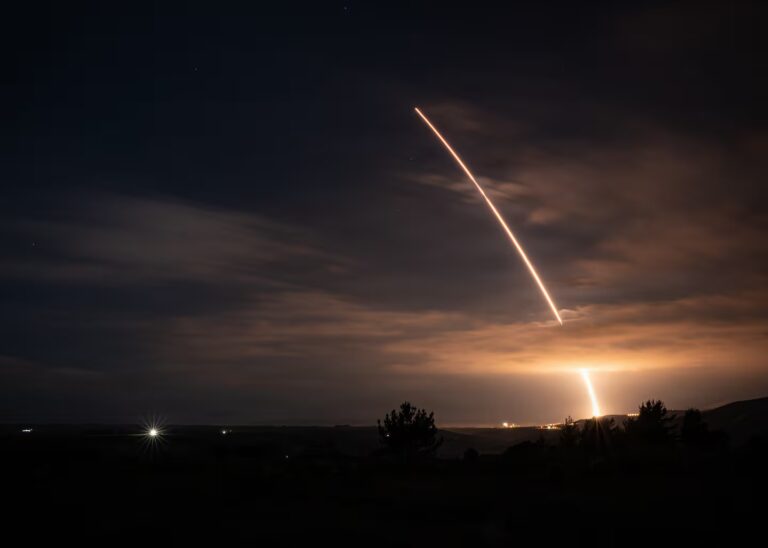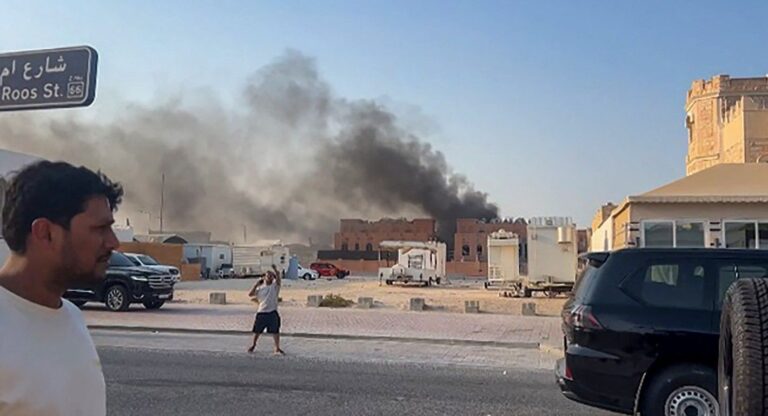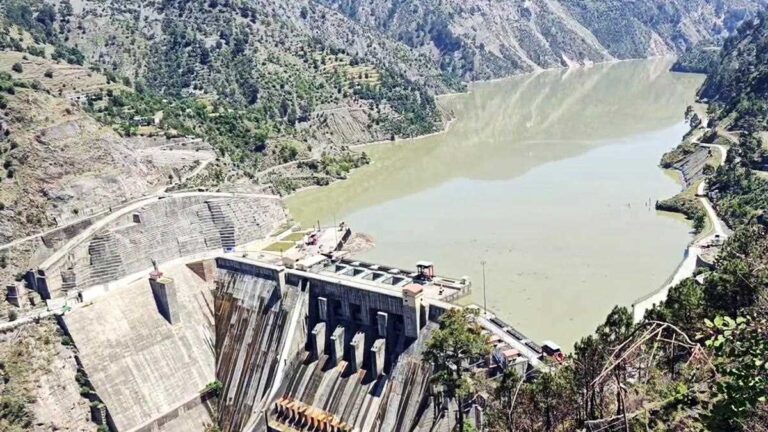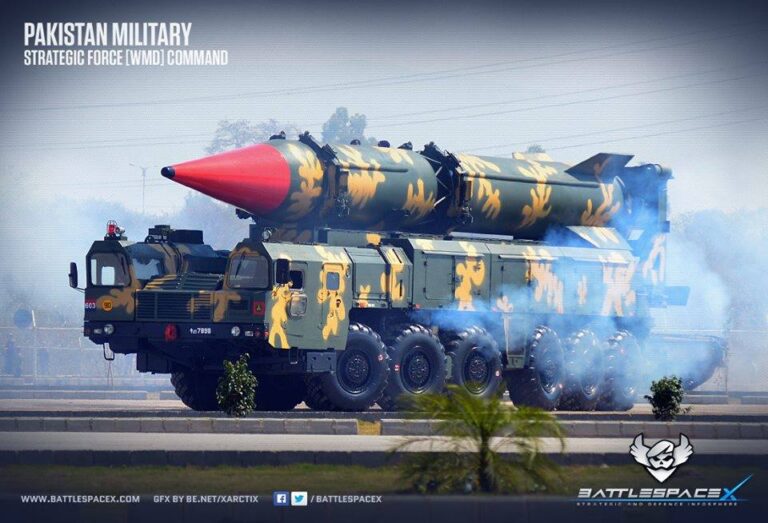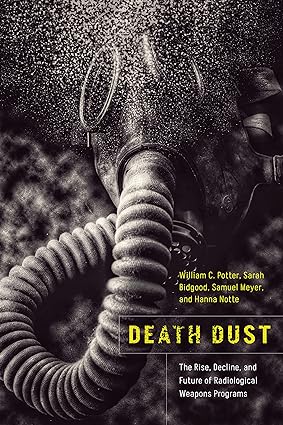
Death Dust: The Rise, Decline, and Future of Radiological Weapons
Authors: William C. Potter, Sarah Bidgood, Samuel Meyer, and Hanna Notte
ISBN: 9781503636668
Publisher: Stanford University Press
Year: 2023
Syed Ali Zia Jaffery
U.S. nuclear historian Francis Gavin has compellingly critiqued key concepts that have dominated the nuclear academy since the beginning of the first nuclear age. While stressing the need for being humble in analyzing the effects of nuclear weapons, Gavin reminds his readers how methodologically challenging it is to understand something that has not happened. Indeed, the debate between political scientists and historians notwithstanding, it is certainly difficult to credit nuclear weapons with the Long Peace. Although a powerful construct, deterrence may not fully explain why nuclear weapons have not been used since August 1945. The declassification of archives has, for example, shed new light on why the Cuban Missile Crisis did not result in a nuclear exchange, highlighting how critical a factor luck was. The said Crisis speaks to the aforementioned problem. This methodological impediment becomes a bigger concern when scholars commit to dabbling in areas and policies that were and are shrouded in mystery.
States’ pursuit of radiological weapons(RWs) is one such topic that brings a number of analytical challenges to the fore. The most conspicuous among an array of issues is the task of identifying as to why no state deployed radiological weapons. In their latest co-authored book entitled “Death Dust: The Rise, Decline, and Future of Radiological Weapons Programs,” scholars William C. Potter, Sarah Bidgood, Samuel Meyer, and Hanna Notte fittingly take up this task. What is noteworthy, however, is that they have their work cut out because of at least two additional, concomitant issues. First, there is a dearth of scholarly work that traces the geneses of states’ radiological weapons programs. Second, radiological weapons have engendered questions about their characterization, definition, and potency. Taken together, these bottlenecks make it difficult for international security scholars to use powerful constructs like deterrence in their analyses. Therefore, the authors must be lauded for taking up this project despite these barriers.
Notably, the authors attempt to answer a menu of questions emanating from this fundamental paradox: although radioactive material and conventional explosives are abundantly available, both states and terrorists have not deployed a dirty bomb. Although solving this puzzle is critical to enriching our understandings of radiological terrorism, the authors only focus on state-level RW programs. At the outset, Potter, Bidgood, Meyer, and Notte defend the exclusion of non-state actors from their study. They argue that “there is a dearth of research on state-level RW programs, which differ significantly from those involving non-state actors with respect to motivations for acquisition and use…” The authors are right in saying states’ RW programs have not garnered enough academic interest. Hence, this book certainly fills a big void in the literature, making the authors’ contribution all the more meritorious.
That being said, leaving out non-state actors because their rationales for development and use of radiological weapons are likely to be different is a tad problematic. This is primarily because radiological weapons can only do so much, limiting their benefits for states and terrorists alike. If anything, it would have been useful to include non-state actors in order to parse some of the differences the authors allude to. It would have made the book more policy relevant. Also, a discussion on non-state actors would have made the authors’ cautionary note more cogent. They warn against being complacent, arguing that there is no guarantee that “the factors responsible for state abstinence will have much bearing on the behavior of non-state actors.” This correct circumspection could have been explained in a more befitting manner by delving into the prospect of radiological terrorism.
All this, however, does not mean that the histories of states’ RW programs have no relevance for those who are trying to prevent and deter acts of chemical, biological, radiological, and nuclear (CBRN) terrorism. In fact, the adoption of Alexander George’s structured, focused comparison, coupled with a reliance on Matthew Evangelista’s weapons’ innovation framework, allows the authors to bring pertinent new knowledge to light. One of the most important findings apropos of CBRN terrorism is that radiological weapons appeared rather unattractive to states who possessed them, especially when compared to nuclear and chemical weapons. The authors term this as one of the key reasons behind the decline of Washington’s RW program. Their rigorous archival research finds that key officials in the U.S. bargained to develop bigger, mightier, and lethal nuclear and chemical weapons, further attenuating the prospect of advancements in that country’s RW program. Radiological weapons’ limited military utility also partially explains why both London and Moscow wrapped up their RW programs. One cannot fault officials in Washington, London, and Moscow for thinking this way. Investing in weapons that could cause colossal destruction was the order of the day during the height of the Cold War. And if the authors’ apt definition of radiological weapons (dispersal of radioactive material sans detonation) is anything to go by, there is good reason to believe that they did and cannot terrorize adversaries. Moreover, terrorists, too, have a range of weapons to choose from. Therefore, it is unreasonable to expect them to use weapons that neither create noise nor kill many a person.
However, as highlighted earlier, there is no reason to disregard the threat of radiological weapons. One factor that must compel us to give due weight to the threats of radiological weapons is the question mark on our ability to deter them. The authors brilliantly speak to the troubles associated with deterring potential users of RWs. As they rightly point out, establishing red lines and devising targeting strategies will be a tall order. While it is easier to deter an adversary by promising its annihilation, it is extremely untenable to do the same when it comes to deterring a radiological attack. What kind of a response will deter an attack that will unlikely cause casualties? This question should be addressed by scholars and practitioners alike, not least because terrorists can exploit this lacuna. Apart from this, another factor that might make radiological weapons useful for both non-state actors and states is their capacity to disrupt economic activities. While the authors do acknowledge the effects of regional politics on the future of RWs, they miss this aspect. At a time when economic connectivity and the politics of pipelines are shaping great power rivalries, inducting weapons that could deny economic spaces will be rather propitious. However, more academic inquiries need to be conducted to say this with certitude. Therefore, this is one of the research avenues for international security scholars that this pathbreaking book has opened.
All in all, Death Dust is a must-read for those that want to understand how historical research can complement political science’s. The book will benefit those that want to dive deeper into the realms of weapons of mass destruction(WMD) proliferation and CBRN terrorism given that it adds a lot of nuances to current understandings of, and perspectives on, these phenomena.
Syed Ali Zia Jaffery is Associate Editor, Pakistan Politico.

